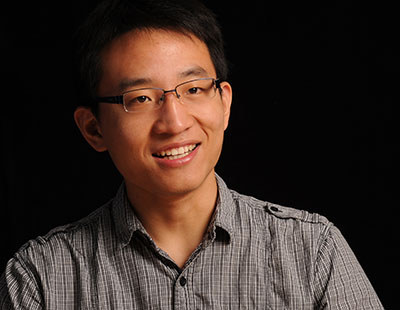
Hometown, Country: Wuhu, China
Academic history prior to coming to MIT: I received my bachelor’s degree in Electrical Engineering from National University of Singapore.
What brought you to MIT? I liked working on technical problems and respected MIT as a school that emphasizes fundamental scientific and engineering advancements. Before I came here, I was prepared to have a tough life that would eventually lead to the infamous Permanent head Damage (Ph.D.) Syndrome. However, it turns out that my journey here is quite manageable and pleasant, thanks to the tremendous support and care from the MIT family.
What problem are you trying to solve with your current research and what are some possible applications? I am currently working on computational and statistical approaches to problems in optical spectroscopy. The technical aspects range from coming up with new designs featuring computational elements for building miniaturized yet sensitive spectrometers, to developing mathematical and statistical models for better understanding complex spectroscopy datasets. Our lab is very interested in applications for Raman spectroscopy, which is an optical spectroscopy technique that probes the vibrational and rotational modes for molecules. Different molecules usually have distinct Raman fingerprints that one can use for various analytical purposes. Throughout the years, we have acquired many Raman spectroscopy datasets for various applications, ranging from biomanufacturing process monitoring to personalized health monitoring. A big part of my job is quantifying what we can learn from these measurements through computational and statistical processing.
What interests you most about your research? I’m from a diverse group where people with different kinds of expertise work together to solve problems that may have a tangible impact on our daily lives. To me, Raman spectroscopy is like computer vision for molecules. I like to design and test out different statistical formulations and processing algorithms to see which ones work the best for the target application. However, in order to really make it work well, one needs to have good optical instrumentation, well-thought experimental design, not to mention accurate processing algorithms, which I cannot do all at the same time all by myself. Luckily, there are some really great people in my group that have skills complementary to mine so that we can all work synergistically.
What are your future plans? I’d like to move on to a technology company that allows me to continue applying what I learned in research and in school to problems that matter. In addition, I think I’ll always be interested in startup opportunities.
